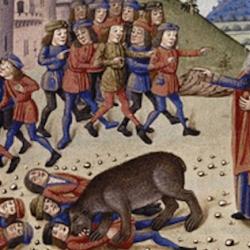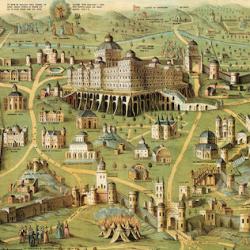Why does Yahweh send two prophets to the Omrides? Two witnesses no doubt. But their ministries are so similar in many respects; why double it? And what, if any, are the differences between them?
One difference is geography. Elijah spends a good bit of the narrative on the far side of the Jordan. He goes to Cherith and then to Zarephath (1 Kings 17), and then travels all the way to Sinai (1 Kings 19). Elijah is out of the land when he is taken to heaven (2 Kings 2). This absence is theologically important, because it means that the Lord has sent the Word of Yahweh into exile with the prophet, and deprived the people of the word.
Elisha spends most of his ministry in the land. He’s apparently traveling with the king when he invades Moab (2 Kings 3) and is in Damascus to consult with Hazael (2 Kings 8), but otherwise his miracles are all done within the land. Even when he performs a miracle for a Gentile, Naaman, he does it from Israel using the Israelite river rather than the rivers of Damascus (2 Kings 5). Elijah is only briefly in Jezreel (end of 1 Kings 18; 1 Kings 21), but Elisha is in Samaria to meet Naaman (apparently; 2 Kings 5:3, 9), and during the siege (2 Kings 6-7).
The difference is dramatically evident when we consider the miracles that are similar. Elijah multiplies the food of a widow of Zarephath, but Elisha multiplies oil for a widow of the sons of the prophets and multiplies food for a gathering of the prophets. Elijah raises the widow’s child, but Elisha raises the son of a Shunammite woman.
This seems a slightly odd sequence: Shouldn’t the ministry to Israel be first rather than second? But it perhaps reflects the provocation to jealousy dynamic: Elijah ministers outside the land, but that provokes a remnant within Israel to turn and associate themselves with Elisha. First Yahweh sends his prophet to the widowed Gentiles, and then to the widow Israel.















